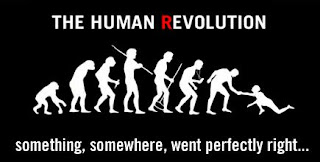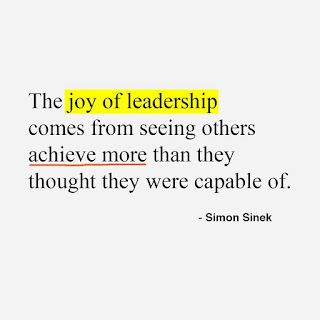SaaS Strategy: Where are we TODAY, and which Pricing Model is Right for you NOW?
Back in 2012, I wrote an article (on this blog) about the potential future of business in the internet age, called The Internet Tsunami. Back in 2012 as we emerged from the infancy of the internet I stated that the internet would become a major business channel for all business sectors not just music and insurance. It was no longer a passing fad. Back in late 1990's we saw the internet emerge from having been a research tool to something which people could experience through to the dot.com boom of the early 2000's when money flooded in to this emerging market but the infrastructure and customer engagement platforms were not ready preventing online becoming more than a side show for businesses.
After the financial crisis of 2007/8 as the economic bounce-back accelerated change in the economy opening the door to the internet age and it began to take shape. My article in March 2012 suggested that what we were seeing the beginnings of the permanent change across all sectors and markets, it was not just Amazon replacing CD music shopping, but that the world was going to change.
The SaaS Tipping Point
The technology tipping point has occurred and it has become the dominant force in driving consumer behaviour. This paradigm shift is when markets move in response to macro factor drivers. For companies going too early with any trend they commit in concrete to a technology which leaves them left behind as the internet evolves (for example Friends Reunited: no interaction and on-going relationship creation, as Facebook found is what makes a successful online social media platform), go too late and you miss the market move and find out you have been left behind (Comet sold electrical white goods and collapsed with over 20% of the UK market share through its 200 stores, but refused to see the move online for these goods by younger consumers, while Amazon at the time had already achieved 8% of the white goods market with no physical shops).
If you can see a trend you have already missed it. Once the tipping point has been reached in any trend then you are playing catch-up. So over the last 9 years the internet has not just become another channel to market for many goods, it has become the dominant channel for many sectors most noticeably in retail, but is now almost ubiquitous, impacting upon every market.
The ability to take products and services online is now in full force with organisations inventing themselves, reinventing themselves as online (SaaS) business models. For many this is a result of a number of key factors, not least is about keeping up with your customers and the competition. But, other key factors such as the reduction in cost of developing online services, as well as the ability to upgrade services quickly in response to rapidly changing or evolving customer demands are other positive drivers of moving online.
Making the shift to go to a SaaS solution is a strategic one, it should be based upon a clear strategic assessment of the market and customer needs and carefully planned out in a detailed business plan.
Software As A Service SaaS
Software as a Service (SaaS) solutions are now common across all sectors replacing manually made service offerings. For many businesses replacing, upgrading and being able to compete within their sector requires companies to move to SaaS offerings. Either bespoke designed SaaS from scratch using in-house or outsourced technicians or tailored from white label sector providers. Offering a SaaS solution to a market is not just a shift change in what an organisation offers but a whole new way of thinking. Too often taking the product online is seen as a cost effective way to compete, or stay in the game as others do, or as a way of trading without barriers expanding the brands reach in an internet dominated world.
SaaS though is more than just simple a move online. It requires a different way of thinking from traditional models. The changing nature of customer engagement, moves from the physical meeting to the online engagement, that requires companies to think and act differently. The nature of the service also changes as it becomes totally arms length customer centric. Customers choose when and what they want to use of the service (for example over 2,700 UK people did their tax returns on Christmas day in 2019, with over 30,000 doing them over the Christmas holiday period in 2019), this requires companies to resource supporting users when they need it not when you are open.
Business to consumer SaaS models need to support consumers with planned engagement and support channels as well as developing SaaS loyalty strategies in place to retain and develop customer segments. For B2B SaaS models working across partner channels puts a set of different requirements in place in accessing target audiences through integrated service offerings through integrated software .
SaaS behaviours also require business to measure very different metrics to be successful, many of which are new to companies not used to SaaS solutions, but if you do not measure them SaaS will fail to deliver the results you expect. Here are some of the key areas for SaaS businesses to monitor and drive decision making from.
Successful SaaS Solutions Start with Minimum Product Viability (MPV)
SaaS achieving its Minimum Product Viability MPV is an essential must have which is not often measured early enough. The principle idea which business leaders are told is that with SaaS 'build it and they will come mentality," but they won't if you don't compete. Just being an online service does not make your product achieve success. So MPV is often misunderstood as do what we have to do to be a player within the market.
SaaS MPV metrics need to be clearer. If you take your service online is must do more than exist. Now I am not saying it needs to be perfect, over-polishing a SaaS solution is one of those very dangerous assumptions we will come onto shortly, but simple migration of a product online is not a SaaS MPV. For Minimum Product Viability to be achieved a SaaS solution must actually compete within the market. It must win existing or new customers for it to achieve MPV status. Too often the model of lower cost looks good on paper, to the accountant, to the competitor analysis and trend analysis but without actually being able to win target segment customers.
Built and they will come mentality often leads to the knee jerk reactions from companies to offer discounts to customers to gain traction. The downside of that is that the predicted margin gains aren't met and if you give it away, customers then do not value it so engagement is low, and the other major problem is that once the opening price is set to gain traction particularly form early adopters who usually are premium customers, it is difficult to recover that market price unless you have large marketing budgets to support the opening offer discount.
Measuring MPV requires leaders to not only check it works (and that is never a given with IT) but also that it achieves MPV as an offering. Does it do what it needs to do for the customer. Does it meet the complete customer requirement of the value proposition, so do not just focus on the pure IT but on the whole value proposition to measure the MPV status. Test it with pilot groups, measure not only it looks good, but does it replace what they were doing? If not it needs to do more.
SaaS Solutions Being a Disrupter
To achieve SaaS MPV, a solution must disrupt the structure of the existing market. Being a disrupter within a market sector was easier with first mover advantage, but now in virtually every market that has been lost, SaaS solutions need to use the whole marketing mix to achieve MPV and not rely on opening offer pricing.
Disrupting any market requires your SaaS offering to target and penetrate precise target segments and disrupt the existing market. Focus on measuring the disruption your new offering is causing. Are you reaching your core target audience with your new offering and taking customers from the competition, or protecting your vulnerable customers with you new offering. Disruption is about changing people's perception and behaviour patterns. So it is important to measure the existing behaviours and their new behaviours using the SaaS solution.
Just shifting your existing customers online maybe a strong defensive strategy if your are the last to move into SaaS, but that is not a disrupter. To disrupt a market you have to do something which changes the game. Changes the structure, the dynamics and the value proposition within the target audience.
SaaS solutions MUST do MORE
SaaS solution need to offer more to customers within their sector. Providing a bigger solution, not just to the existing need but to wider segment needs should be built into the SaaS solution. Even if not a MPV points the potential to move online must drive engagement, through community, through advice and support to enable SaaS to add real value to target segments.
Building more into a SaaS solution can be undertaken at low or no cost if planned in early, and is essential. SaaS solutions need to build in evolution so that they can evolve in response to customer evolving demand, competition short-term and long-term responses and to life-time evolution needs. Being able to add in and evolve a SaaS solution to a complete solution is essential so it offers a complete long-term solution, not just a quick fix. That requires several micro launches, (evolutions) to meet theses needs and to enable the SaaS solution to add more value (value proposition).
Measuring why, where and who is using the site for what as well as forums and associated features will tell you the full value you could, should and must offer. Often support functions such as help desks, brochures, technical information, support functions as well as best practice and associated activities are always areas where doing more can be seen, but only if you measure it! What about training and certification of users and channel partners, and the whole range of other activities which these intranet offerings can also provide?
SaaS target the right segments.
Moving to SaaS is not a straight line. Build - test - launch sit back and watch them come onboard is how SaaS is sold to CEO's in shifting to SaaS solutions, but that is not how SaaS adoption works. Adoption curves matter, so identifying who and when segments will move over to SaaS solutions is vital and plan out the adoption by target segment.
The challenge is that the key drivers of SaaS solution within an organisation comes from specific segments and so migration plans need to be reflected in the SaaS rollout and marketing adoption planning. Adoption curves for SaaS should be planned in early so that realistic and appropriate marketing for SaaS solutions inform and determine metrics of success.
Who are the core target segments that SaaS solution should be targeted at? This core question is often lost in the generic answer everyone! But it is not. SaaS solutions must add value to everyone, but they must be focused on converting the businesses strategic target audience. That focus must be at the heart of the SaaS solution design and implementation, if you win more great but your focus is to move the brand's customer base.
For success SaaS solution moves the brand's position, its profitability and its performance by acquiring new higher value customers. Higher value customers in both B2B and B2C environments for mainstream players are usually found higher up the adoption stream. So laggards find growth in volume and value in teh late majority (see below for market adoption curve and total market size modelling). Late majority players can already win downstream laggards but need to expand by either growing with their sector or by moving into early majority customer segments, and likewise early majority customers look at high value (but smaller total volume) early adopters.

The key measurements here are to identify the precise target segments you intend to win, and measure that as your metrics of success. Do not just measure total customers as this can inflate your SaaS success. While total numbers always looks good, it mayn't be profitable and can often lead to SaaS platforms being pulled into chasing total numbers not focusing on developing profitable long-term customers. This is typically seen when a new SaaS platform has to buy its customer growth, so people see the growth as success, but it can be boring through their cash reserves as they have focused on the wrong metrics.
Profitable target customers support growth of a SaaS solution must be measured to see if the strategic goal is being achieved.
SaaS Pricing Models
There are several ways to price your SaaS solution which we are break down into 5 key models, each reflecting the market your SaaS operates within, your competition and the solution you are providing to whom. Here are the most effective SaaS pricing models and the pros and cons of each with their key features::-
1. Flat Rate Pricing
The most common and simple, often replacing a previous non-SaaS solution. It is simple and effective, easy to use price to incentives by allowing target audiences to compare the value proposition. The difficulty in this model is that it is difficult to add value to target audiences, such as high-use or high-value customers. Some SaaS pricing models then try to add premium models to this, by adding a second solution to enable extra features and pricing to the offering, but this often creates technical and is difficult to migrate customers across to.
2. Usage Based Pricing
Usage based pricing is popular and provides an ideal way to price your SaaS solution. It enables pricing scaling, the more your company use, the more you value you consume, the more you pay. It allows low cost acquisition and then scale-up in pricing towards target audiences. This also enables additional levels to be added and funded through growth as usage drives demand. Usage based pricing also reduces and often removes barrier to entry as the SaaS platform accounts for a wide-range of customer segments, from new entrants through to high demand heavy user groups.
Usage based pricing does have some limitations. The moving up levels (and down) can be challenging for customers to see what they get for the price they pay. The key area of concern for a SaaS Solution using this model is that monthly revenue, a key metric will vary and is therefore not popular within the sector as predictable revenue is often a core demand for investors.
3. Multiple Tiered Pricing Models
One of the most effective models as it allows the SaaS platform to be priced to target audiences using tiered pricing. Tailoring different packages around target audiences enables the SaaS platform you can appeal to multiple audiences. This has a key second advantage in revenue generation as you maximise revenue across all channels to market. It also allows simple clear and honest upselling opportunities as well as add-on pricing with new features/levels being added in response to changing demands.
Key factors to be be aware of here is having too many pricing levels. Just because you can does not mean you should. 3 is optimum and 5 is often seen as maximum, the more you add the higher the abandonment rates and the lower the effective of marketing campaigns.
The idea of dynamic pricing, too many tiers leads towards a platform that looks like usage pricing which dilutes and degrades the tiered pricing focus on key target segments, vital for strategic success of a SaaS solution. The other downsides of too many packages is that trying to over target segments damages the focus on the tiered model, confusing customers through too many choices and damaging price effectiveness by not reflecting tiered pricing to deal with heavy use customer groups.
4. User Pricing
The fourth pricing model moves away form company wide pricing to the end user. This model is ideal for many sectors where simple pricing wins customers over. Wether that is a fixed annual or monthly fee, its simplicity and logic engages with SaaS platforms whose offering of a direct pricing model allows customers to sign-up as individuals.
User pricing is popular as it is predictable in income and scales easily with numbers. This predictability makes it popular but needs to be internally measured by usage by individuals to see what value they generate from the platform.
While simplicity makes it popular it is also its major limitation as a pricing model. Per user charges means that there is little opportunity to get group buy-in as one person can use the platform and share the results. The inability to signup whole teams as one limits routes to market through channel partners. It also means that churn becomes a major factor as it is harder to control churn as people relate use to value as an individual.
5. Active User Pricing
Is a variant of of user pricing but works by charging for people actually using the SaaS platform. It is seen as excellent value for money as it removes risk for purchasers as sign-up does not cost. This drives engagement and adoption as it is only usage which is charged. People can sign-up but do not pay until they actually use the platform, it is ideal for enterprise business models.
The downside of active user pricing is that it is difficult to grow outside specialist enterprise areas. Often premium priced as a live service it is difficult to encourage widespread adoption with teams or across sectors.
6. Per Feature Pricing
One recently developed and rapidly growing variation on this theme is called per feature pricing. Customers of businesses pay a subscription fee, a base fee with limited functionality which achieves MPV and adds value and then differing premium priced add-on features which either replace the need for multiple upgrade options or allow a SaaS solution to adapt with its own specialist feature cost model expansion.
This model encourages customers to upgrade to unlock additional functionality which allows segment specialisation and directly relates those functions to direct costs. This per feature pricing model allows sites to know their operating cost models and revenues of the base model, and enables cost scaling for bespoke areas that may take significant resources to develop. Sub-segmentation by feature is popular as it allows cost to value to be direct and then reverse rolled back into the SaaS site as it evolves as a cost-free upgrade.
The key challenges of cost per feature pricing is that SaaS solutions can be pulled by small segments away from their core model to meet these minority groups. The other challenge of per feature pricing is that of customer frustration as key features are at a premium.
7. Freemium Pricing
Saving one of the most popular and misunderstood to last is the freemium model. This model allows customers limited functionality the SaaS solution platform for free. This enables mass adoption through any market of the SaaS platform with a clear level of functionality which buys users in. It is ideal for large volume platforms such as social media channels as the model removes the key hurdle to volume customer acquisition.
Freemium gets customers bought in for nothing as there are no barriers to entry and this supports rapid expansion through and across channels, but it does limit value adding at the freemium level. Encouraging customers to trade up and use the additional chargeable features is teh real challenge
Revenue is the real looser here for companies. This makes it less popular with funding parties as conversion to revenue is undefined within this model. To fund freemium SaaS models multiple funding systems are often adopted, such as smart algorithm advertising which is an ideal way to fund expansion.
With freemium sites high churn rates and low loyalty rates are major drain factors to this model, both of which make traction and the ability to encourage customers to upgrade difficult. Funding to support the core functionality is often under pressure to keep it developing and engaging with the volume of its core customer base.
Summary
SaaS solutions are now mainstream to nearly all business and customer segments. Being mainstream though does not mean that the risks have disappeared, in many ways they have increased as expectations have accelerated as audiences demands have risen.
Whichever SaaS pricing model you adopt understand that they all come with risks which need to be understood and actively managed within your planning.
SaaS solutions must be part of a strategic process for leaders to understand and deal with. One area that many leaders do not fully appreciate is that building an experienced SaaS team around them is a prerequisite for success.
Learn more read further blogs or get in touch to see how I can assist you.
Learn more at www.richardgourlay.com





















